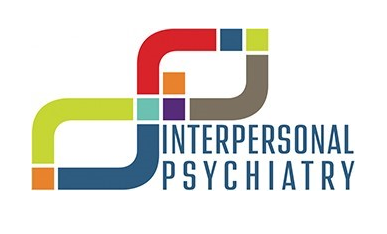What is Rapid Cycling in Bipolar Disorder?
About 3 million people in America deal with bipolar disorder. It’s a condition where an individual’s mood changes without warning, prompting emotional highs and lows.
With normal bipolar disorder, an individual may experience one or two episodes a year. However, there is another form of bipolar disorder that increases the episodes. It’s called rapid cycling bipolar disorder.
Today we’ll be talking about rapid cycling bipolar disorder and how to manage it if someone you know is dealing with it.
Defining Rapid Cycling in Bipolar Disorder
Rapid cycling is a type of bipolar disorder where an individual has frequent mood swings. It is diagnosed if a person has four or more mood episodes throughout the year.
Mood episodes vary between depression, mania, and hypomania. Depression occurs when a person feels despair about a situation, and their mood affects their day-to-day life.
Mania and hypomania are two disorders in which a person sees an increased “high” in their energy and activity level. However, this elevation in mood can be detrimental to their health due to the individual. They’ll experience a reduction in sleep, and their sole focus will be whatever activity they’ll be working on.
A person who suffers from rapid cycling in bipolar disorder will frequently go through these mood changes. That’s why it is considered one of the most severe forms of bipolar disorder.
Related: Types of Sleep Disorders
Symptoms of Rapid Cycling Bipolar Disorder
One of the main symptoms that people with rapid cycling bipolar disorder have is the frequent transition between mania, depression, and hypomania. However, it depends on the type of bipolar disorder they have.
If an individual is suffering from bipolar 1, their manic episodes will last up to seven days and could require hospitalization. There are also some cases where there is a mix between depression and mania throughout the episode’s length.
In bipolar 2, the individual will alternate between hypomania and depressive episodes. Any person suffering from rapid cycling will go through at least four or more of these episodes over 12 months.
Yes, the episodes will vary from person to person. Some deal with rapid cycling from the onset of their bipolar disorder; for others, it can develop gradually. Regardless of the situation, it’s still a complex disorder to deal with.
Find out more information on bipolar disorder by reading about it here.
Causes of Rapid Cycling Bipolar Disorder
Researchers aren’t sure what causes rapid cycling in bipolar disorder. But they do know that between 11 and 25 percent of people with bipolar disorder will develop rapid cycling.
 Common risk factors associated with developing rapid cycling bipolar disorder include:
Common risk factors associated with developing rapid cycling bipolar disorder include:
- Age
- If someone develops bipolar disorder in their teens, they are more likely to become a rapid cycler in the future.
- Sex
- Women have a higher risk of developing rapid cycling in bipolar disorder than men, which may relate to hormonal imbalances during their menstrual cycle.
- Type of bipolar disorder
- Those with bipolar 2 disorder have a greater chance of developing rapid cycling.
Related: Symptoms of Personality Disorders
Treating Rapid Cycling in Bipolar Disorder
Due to its complexity, treating rapid cycling in individuals is more challenging than those who are non-rapid cycling. However, we do have treatments available that can help you manage the symptoms.
A typical treatment used in dealing with rapid cycling bipolar disorder is mood stabilizers such as Lithium. It’s proven successful in helping people manage their bipolar disorder symptoms. But you will need to combine it with an anticonvulsant to maximize the effectiveness of treatment.
Antidepressants are also used when treating those with rapid cycling bipolar disorder. However, if you’re already taking them, the dosage may have to be adjusted because they may increase the cycles.
Other treatments that we use to help an individual with rapid cycling in bipolar disorder include:
- Cognitive Behavioral Therapy (CBT)
- Ketamine Infusion Therapy
CBT involves helping individuals recognize the thoughts and actions affecting their mood. By recognizing the negative emotions, we’ll be able to teach you techniques that can help you manage them.
Some of the techniques include:
- Writing your thoughts in a personal journal
- Participating in activities that you enjoy
- Building SMART (Specific, Measurable, Achievable, Realistic, Time-based) goals
Ketamine infusion therapy involves the stimulation of neurons in your brain to promote feelings of relaxation. It’s primarily used in the treatment of depression, anxiety, and OCD. However, since bipolar disorders can encompass those mental health conditions, ketamine infusion therapy can be a successful treatment option for any individual with rapid cycling bipolar disorder.
As you can see, there is no one way to treat rapid cycling bipolar disorder. But using the right combination of treatments and medication can help you manage the symptoms effectively.
You can learn about our other treatment services by following this link.
Tips For Managing Rapid Cycling in Bipolar Disorder
At Interpersonal Psychiatry, we know that managing the symptoms of rapid cycling bipolar disorder can affect your daily lives and be challenging to deal with. You must use correct coping methods to ensure that you don’t spiral. Here are suggestions you should keep in mind:
- Try to avoid alcohol and drugs because they can make your condition worse
- Maintain a daily routine
- Confide in a close relative or friend about your current state of emotions
- Reach out to a doctor if you think that your symptoms are getting worse
By using these tips, you can remain vigilant in your battle with rapid cycling bipolar disorder. It won’t be easy, but you can do it.
If you or a loved one are dealing with rapid cycling, make sure you contact us today. You can get the help you rightfully deserve.


